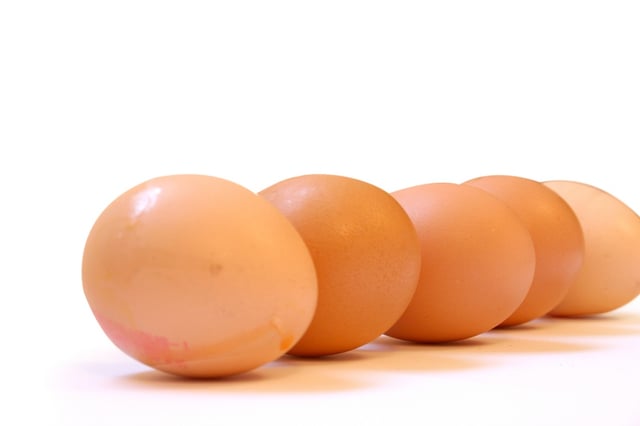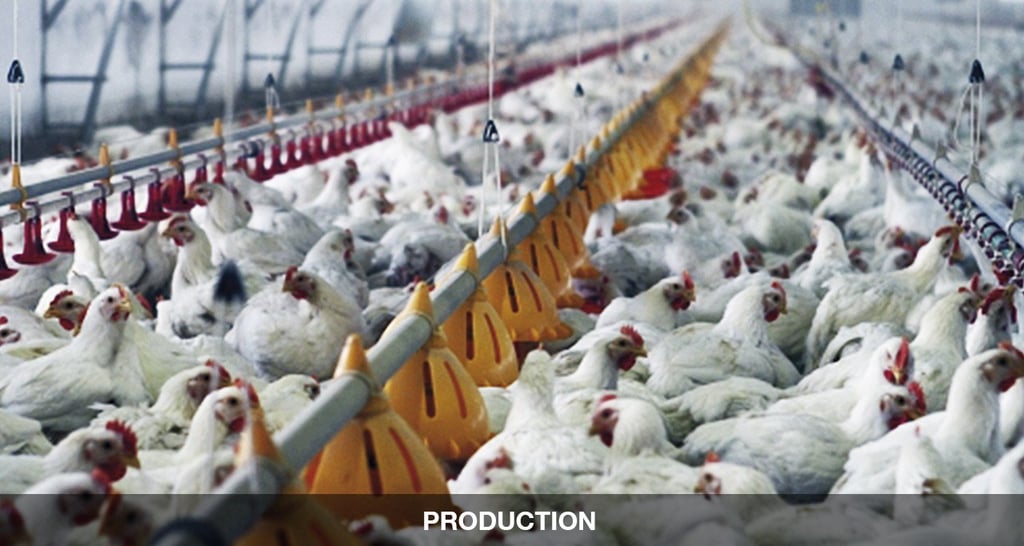Poultry breeding

Gearboxes are used in countless industrial sectors, thanks to their versatility and the possibility of offering customized solutions for every need. One of the areas where you can be find a lot of examples of the variety of their functions is breeding. In fact, starting from the poultry breeding until cattle breending, in the establishments linked to these sectors there are gearboxes in almost all the machine. The problem related to this sector are very specific and variable, but those that need more attention are ecosustainability and animal welfare, as weel as food prevention and safety, that are essential and priority components for all establishments involved in the agrifood chian.
In the agricultural and farm sector, the quality and exclusivity of production are strongly effected by the change in climatic conditions; this is why, from a technological point of view, the solutions proposed must be highly flexible and adaptable to the different contexts where operate the client company to satisfy their many but also specific needs.
Gearboxes designed, developed and produced in the "Breeding and agriculture" field are used for animal feeding, egg collection, window opening and closing, field irrigation, environmental disinfestation and many more applications, which highlight its extreme versatility
The necessary characteristics of the machinery inside the industrial system must guarantee the wellbeing of the animals, therefore they must be silent, they must limit the vibrations, they must be able to be placed in different positions and can be quickly replaced in case of failures and problems.
The difficulty in dealing with animals means that the structures they use are subject to disadvantages of all kinds, so it is necessary to have the possibility of ready interventions and specific materials that even in case of malfunctions do not cause injuries inspecimens. In addition, the speed of operation of the machinery must be adjustable and must allow thorough cleaning, so specific materials are needed to keep the environment as clean as possible.
Characteristics of the poultry sector for which gearboxes are required
As regards gearboxes in poultry breeding, the need is to optimize the spaces in which birds can live, with specific ventilation systems that allow the recirculation of air, with structures suitable for feeding and with attention to the hygienic rules on the treatment of pollen. Depending on the type of final product it is then necessary that the machinery collect the eggs and that they do it in the most delicate way possible.
The Directive 1999/74 / EC on the welfare of animals supervises the living conditions of laying hens for establishments where there are more than 350 specimens. Laying hens means mature chicken for the production of eggs not for hatching, and for which a "nest" must be available a separate space without metal nets on the floor where they can lay eggs, a litter, and a usable area, with minimum width, height and slope measures. This directive imposes minimum requirements of size and length for birds, both for mangers, drinking troughs and perches, both for the freedom of movement and for the floor of the plants, which must be constructed so as to adequately support the legs of the animals .
Therefore, gearboxes in this area are used within the most important machinery, from those that distribute the feed, to those that collect the eggs, to the systems of light to those of aeration that allow the pollen to dry out. To produce eggs, chicken need specific lighting conditions, heat and ventilation, for which gearboxes are important tools that can guarantee these conditions by adjusting incoming airflows.
Feeding systems managed by gearboxes
Access to the feeders must be made simple from the first day of life of the birds, so access to food must be adjustable according to the growth of the animals, they can reach it comfortably. The feeding must be provided at a specific speed, so every animal has it available at the same time. That avoids the migration of the animals, mass movements that complicate life in the hen-house, so a gearbox, that monitors the distribution, is necessaryto maintain ideal speed (12 meters per minute).
There are different technologies to provide feed to poultry houses:
- Hopper feeder: The hopper feeders are activated by a clock with the possibility of programming the number of daily distributions and the waiting time in the parking areas. This is a system of independent hoppers that run, each with two wheels, on the rounded outer side of the feeders. The feed falls by gravity and is released into the feeder thanks to an adjustable doser; the quantity of feed is determined by a sliding element controlled by two levers (or screws) at the end of each hopper. Two snow plow scrapers, mounted at the end of each hopper, run to the bottom of the feeder and push the feed to the bottom of the porch to the animals. The hoppers and the relative filling system are designed to prevent the "bridge" or the de-mixing of the feed. Thanks to a simple but effective system of compartments on hopper feeders and to appropriate auger nozzles for loading the feed, it is possible to fill the hoppers desired, by number and position, so as to leave hoppers empty that do not need the weaning planes. This system allows a very accurate distribution, with a very low amount of current.
- Flat chain feeder: It is installed in the same cage system, the access to the feed is allowed thanks to a sliding band instead of the Veranda grid. The feed level is regulated by a graduated guillotine doser. A multi hopper tower for feed per cage row is standard; in long rows, two multi hopper towers can be provided in order to divide the chain circuit in two, to reduce the travel time and to select the feed. Each hopper has a return wheel to better control the feed return. On the control panel it is possible to program start and run times and start sequences of the towing units of each floor, to avoid electrical overloads in accordance with the load auger flow rate.
- Spiral feed: used to feed the feed trays in broiler chickens and used as an additional system for feeding and distributing litter in laying equipment, for feeders placed inside the henhouse.
For all feeding systems silos up to 50 cubic meters are used with augers with a capacity of up to 4400 kilograms per hour, depending on requirements.
Gearboxes are also used in poultry farms
In the case of broiler farms, the main problems concern the hygienic conditions, the density of the animals, the annual life cycles, the homogeneity of growth, for which an automatic and calibrated feeding is necessary. Furthermore, reproduction must be experienced as a simple and natural process. To guarantee these characteristics, it is necessary to have suitable, specific and adaptable machinery that can follow the growth of the specimens and be adjusted according to need, to avoid having to move them. Also in this case there are essential heat and light conditions for the correct growth of the chicks.
The egg collection is made thanks the gearboxes

Gearboxes in egg collection are a very effective tool. The egg collection takes place thanks to the sloping pedestrian on which the hens move, which causes their products to roll into the collection tapes, where their stroke is slowed by a firm egg-wire, which blocks them just before reaching the canal of collection in order to reduce its speed and avoid collision with the eggs that are already on the belt. The wires are activated by a reducer with microswitches suitable for adjusting the lower or upper position. The system is controlled by a clock and a timer and the number and duration of operations can be programmed. There are dissuasion technologies to make sure that the hens do not pick eggs.
A reducer at the head of each row of cages, moving up and down integral with the conveyor, engages a toothed wheel on each floor, thus activating the movement of the pair of belts relative to the plane at a standard speed of about 3.5 m / min . An optional frequency variator, equipped with noise filters, allows to vary the belt speed from 1.5 to 6 m / min; it can be activated manually with a potentiometer or automatically activated by an egg counter. The egg conveyors are also customizable according to the needs of the individual factory.
Mini conveyors (egg feeders) receive the eggs from the ribbons: they separate the ones with the soft shell, they convey the eggs and they synchronize the transfer in the baskets with the sticks of the elevators. The chopstick baskets, designed to carry the eggs delicately, take them to the lower level, follow a curved grid and then rise and be released accurately on a table or conveyor. The level of the conveyor can be set in advance according to customer needs. On the elevators with collection table it is always possible to modify the egg discharge point in favor of a conveyor which will be decided to install. The standard speed of conveyor belts is 1.2 m / min. The drive units of conveyor belts and elevators have separate gearboxes. An optional frequency gearbox equipped with anti-interference filters, controls the tape speed from 0.6 to 2 mts / min and can be activated manually with a potentiometer or automatically with an egg counter. The speed of the elevators is fixed.
Sliding belts for the removal of dredges driven by gearboxes

In large plants, technologies that enable cleaning effectively are required, and that can monitor the situation of the specimens, to avoid mass displacements in this case as well. The chicken do not like dirt because they "know" that living in unhealthy places is equivalent to increasing the risk of contracting diseases (and therefore, as an extreme consequence, of dying); the survival instinct pushes them in search of clean places if they are forced to live in conditions of poor hygiene, their stress level rises, causing a lowering of the immune defenses and therefore becoming highly prone to getting sick. To remove the debris, below the level of metal nets where the hens move, a propylene tape with a glossy surface is positioned, which thanks to a gearbox is slid under some scrapers that detach the pollen and the they fall on other tapes, in a continuous movement that allows them to be transported to the outside, where the drying will take place. In fact, in many factories we find outside a further series of ribbons, on which the pollen is run, in correspondence of the ventilation ducts that eliminate the exhausted air of the interior of the shed, and which increases in this way the drying process . Also on the outside, the sliding of the belts is entrusted to gearboxes, which must also cope with adverse weather conditions.

